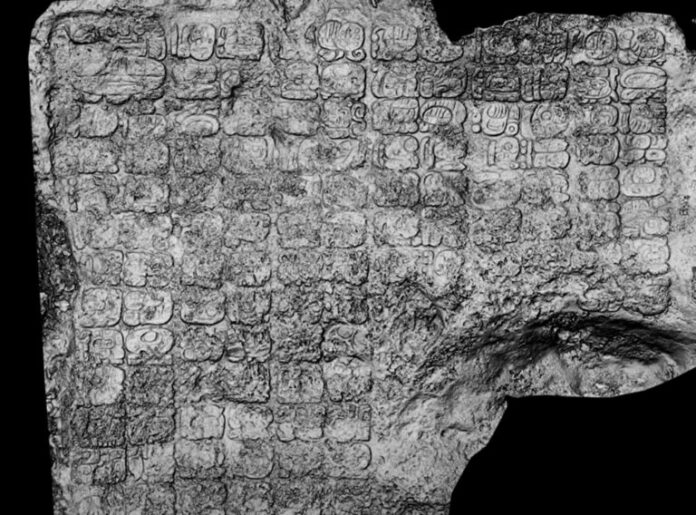In a groundbreaking revelation, archaeologists have uncovered a massive Mayan hieroglyphic text in the Cobá Archaeological Zone, Quintana Roo. This extraordinary find, inscribed with 123 hieroglyphic cartridges, provides a fascinating glimpse into the rich history and culture of the region, specifically the founding of the town of Keh Witz Nal in 569 AD.
Excitement Over Cobá’s Ancient Script
The discovery, announced by Mexico’s National Institute of Anthropology and History (INAH), underscores the ongoing efforts to preserve and study the invaluable remnants of the past. The tablet, featuring intricate Mayan hieroglyphics, was found near Nohoch Mul, the tallest pyramidal structure in Cobá, known as the “City of Choppy Water.” This city boasts a continuous history spanning 1,300 years, from 100 BC to 1200 AD.

During a press conference, INAH’s general director, Diego Prieto Hernández, revealed this finding as part of the archaeological advancements made through the Program for the Improvement of Archaeological Zones (Promeza). The panel, discovered in a waterhole 160 meters from Nohoch Mul, is an extensive L-shaped inscription, covering over 11 square meters, carved directly into the rock.
Foundation, Rulers, and Deities Detailed
Preliminary studies of the inscriptions indicate they refer to the founding of Keh Witz Nal, or “Deer Mountain,” dating back to May 12, 569 AD. Remarkably, the name of a previously unknown sovereign, K’awiil Ch’ak Chéen, was identified, enriching the dynastic history of Cobá. The inscriptions reveal that many rulers, including three women, adopted the name of the god K’awil, symbolizing their protective deities’ attributes.
The text also connects historical events with mythical origins, referencing tutelary gods like Bolón Tz’akab Ajaw, “Lord of Countless Generations,” who laid the foundations for the corn and cocoa dynasties.
Complicated Conservation Process

As part of Promeza, efforts have been intensified to protect this significant artifact from environmental deterioration. A comprehensive cleaning process was undertaken to remove soil, salts, and weeds. Restoration included injecting lime mortar fillings to reinforce the rock, which suffers from water stagnation during rains. High-precision recordings of the glyphic text were created to facilitate further epigraphic studies.
Finding and Preserving Maya History
Prieto Hernández highlighted that the Promeza program is enriching our understanding of Cobá and other sites on Quintana Roo’s eastern coast. At El Meco, research and conservation have concluded, while Tulum sees significant progress in infrastructure and signage enhancements. The Museum of the Eastern Coast, set to open in September 2024, will exhibit artifacts from these efforts, showcasing the evolution of Mayan cities.
Meanwhile, in Muyil, research has uncovered 11 previously hidden structures, with ongoing efforts to improve signage and infrastructure.
Conclusion
This monumental discovery at Cobá not only illuminates the intricate history of the Mayan civilization but also reinforces the importance of preserving these cultural treasures. As research continues, the newfound knowledge from this hieroglyphic text will undoubtedly deepen our appreciation of the ancient Maya and their enduring legacy.
